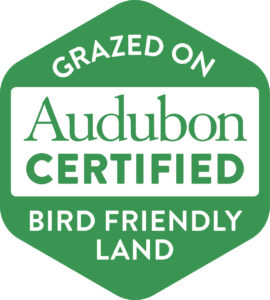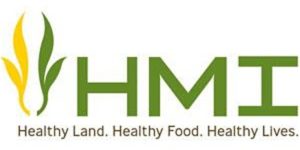The Dixon Water Foundation offers many online resources for landowners, educators and the public. Research initiatives supported by the foundation, as well as other articles and presentations about topics related to our mission, are listed below.
If you have questions about research projects on Dixon Ranches, please contact Philip Boyd, Vice President – Science and Research.
- Please visit this page to see our Annual Reports summarizing foundation activities.
- Please visit this page to see a recap of Cattle Grazing and Wildlife Habitat research on our Mimms Unit ranch (2008-2020)
- Texas Water Specialist series, June 2021. “Regenerative Land Management for Healthy Watersheds”, with Philip Boyd, Director of Science and Communications, and Casey Wade, Vice President of Ranching Operations, at Dixon Water Foundation. Recorded Webinar, Casey’s PowerPoint, Philip’s PowerPoint
- Motus wildlife tracking network – Mimms Unit Station in the Chihuahuan Desert Grasslands.
- Allen Williams grazing workshop:
- Grass Fed Beef Genetics & Finishing [ PDF ] [PowerPoint]
- State of Grass Fed Industry [ PDF ] [PowerPoint]
- Adaptive Grazing and Relationship to Soil Health [ PDF ] (36MB)
- Dixon Ranches Success Stories: spring 2017 presentation by ranch manager Casey Wade about how regenerative grazing has improved Dixon Ranches
- Collaborative Conservation and Adaptation Strategy Toolbox (CCAST) – Mimms Unit Case Study
- Bill Carr Plant Inventory – Mimms Unit (West Texas)
- Bill Carr Plant Inventory – Leo, Block, Heard, Forman, and Pittman Units (North Texas)
- Botanical Research Institute of Texas – Community and tech-driven approaches to applying phenological data for more resilient prairie management on working lands. (2022)
- Research by Richard Teague et al. on benefits of multi-paddock grazing
- Links of microbial and vegetation communities with soil physical and chemical factors for a broad range of management of tallgrass prairie by W. Richard Teague and Steven L. Dowhower
- “Soil greenhouse gas emissions as impacted by soil moisture and temperature under continuous and holistic planned grazing in native tallgrass prairie” by Steven L. Dowhower, W. Richard Teague, Ken D. Casey, RhondaDaniel in Agriculture, Ecosystems & Environment (January 2020), Volume 287
- “Impacts of holistic planned grazing with bison compared to continuous grazing with cattle in South Dakota shortgrass prairie” by Mimi Hillenbrand, Ry Thompson, Fugui Wang, Steve Apfelbaum, Richard Teague in Agriculture, Ecosystems & Environment (July 2019), Volume 279, Pages 156–168
- “Evaluating the ranch and watershed scale impacts of using traditional and adaptive multi-paddock grazing on runoff, sediment and nutrient losses in North Texas, USA” by Jong-Yoon Park, Srinivasulu Alea, W. Richard Teague, Jaehak Jeong in Agriculture, Ecosystems & Environment (March 2017), Volume 240, Pages 32–44
- “Grazing management impacts on vegetation, soil biota and soil chemical, physical and hydrological properties in tall grass prairie” by W.R. Teague, S.L. Dowhower, S.A. Baker, N. Haile, P.B. DeLaune, D.M. Conover in Agriculture, Ecosystems & Environment (May 2011), Volume 141, Issue 3, Pages 310-322
- “Benefits of Multi-Paddock Grazing Management on Rangelands: Limitations of Experimental Grazing Research and Knowledge Gaps” by Richard Teague, Fred Provenza, Brien Norton, Tim Steffens, Matthew Barnes, Mort Kothmann, Roy Roath in: Grasslands: Ecology, Management and Restoration. 2008. Nova Science Publishers Inc. Hauppauge, NY.
- “Multi-paddock grazing on rangelands: Why the perceptual dichotomy between research results and rancher experience?” by Richard Teague, Fred Provenza, Urs Kreuter, Tim Steffens, Matt Barnes in Journal of Environmental Management (October 2013), Volume 128, Pages 699-717
- Texas AgriLife Research: “Multi-paddock grazing is superior to continuous grazing” (June 2011)
- Noble Foundation: Ag News and Views
- Walt Davis: articles and books about ranching
- Sul Ross State University’s Borderlands Research Institute research at Dixon Ranches Mimms Unit
- Effects of Continuous and Rotational Livestock Grazing on Forb Quality and Quantity: Implications for Pronghorn Habitat Management. Locke et al. 2021, Rangeland Ecology & Management.
- Habitat Relationships of Grassland Birds in the Chihuahuan Desert. Final Performance Report, 2016-2019, The Wildlife Restoration – Section 4 Grant Program Texas, Texas Parks and Wildlife Department 2019.
- Overwinter Survival and Habitat Selection of Baird’s and Grasshopper Sparrows in the Marfa Grasslands, Texas. Thesis by Deniz Josefina Perez-Ordenez, Sul Ross State University, 2019.
- Effects of Livestock Grazing on Scaled Quail and Grassland Birds in the Marfa Grasslands, Texas. Thesis by Kaitlyn Williams, Sul Ross State University, 2019.
- Analysis of Factors Influencing Mearn’s and Scaled Quail Distribution in West Texas. Chapter in Using ecological modeling as a management tool for quail species in West Texas. Thesis by Katherine J. Sauer, Sul Ross State University, 2019.
- Trans-Pecos Pronghorn Restoration Update 2017.
- Influence of fire and drought on soil surface microbial communities in the Marfa grasslands, Presidio County, Texas. Thesis by Masahiro Ohnishi, Sul Ross State University, 2013.
- Small Mammal and Grassland Bird Response to Wildfire on the Marfa Grasslands: by Robert Allcorn, about his thesis conducted primarily on Mimms [PowerPoint]
- “IMPACT OF FIRE AND SUCCESSION OF MICROFLORA AFTER” by Masahiro Ohnishi, Bonnie J. Warnock, Louis A. Harveson, and Jackie Denson [PowerPoint]
- “The Road to Recovery: Soils and Vegetation of the Marfa Grasslands, 18 months after the Rockhouse Fire” in Texas Wildlife (July 2013), republished here with permission of the Texas Wildlife Association
- “Small Mammal Community Recovery after Fire” by Bobby Allcorn and Bonnie J. Warnock in Texas Wildlife (September 2014)
- “Wintering Grassland Birds of the Rio Grande Basin” by Miguel Angel Grageda Garcia and Bonnie J. Warnock in Texas Wildlife (December 2011)
- “A Life-Giving Trail: Documenting the Environmental History of Alamito Creek” by Megan Wilde and Steven Platt from the Journal of Big Bend Studies 23
- Earth A New Wild – Plains: This documentary explains more about the relationship between grazing animals and grasslands, and why grasslands are imperiled worldwide
- “Understanding Soil Health and Watershed Function: A Teacher’s Manual” by Didi Pershouse, a workbook for educators, a joint project of The Dixon Water Foundation, The USDA Natural Resources Conservation Service, The USDA Southern Plains Climate Hub, The Soil Carbon Coalition, Redlands Community College

